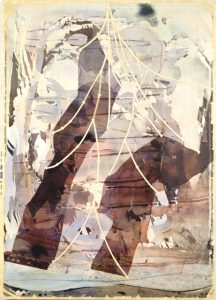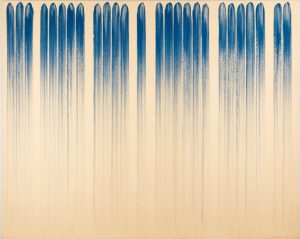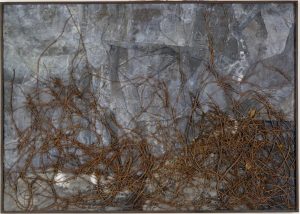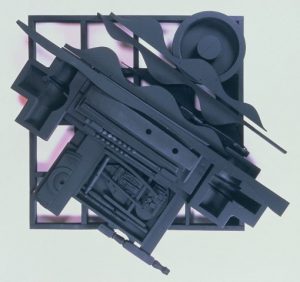October 6 (Saturday), 2018 – January 14 (Sunday/national holiday), 2019
Galleries A, B and C at Hara Museum ARC

ⓒShinro Ohtake
This exhibition looks back at two seminal years: 1979, the year the Hara Museum was born in Tokyo ahead of a nationwide boom in art museums, and 1988, the year Hara Museum ARC was born in Gunma, a year before Japan transitioned from the Showa period to the Heisei period. It does this by shining a spotlight on works from the Hara Collection that were created in each of those years.
Featured Artists: Anselm Kiefer / Leiko Ikemura / Toshinobu Onosato / Shinro Ohtake / Kazumi Kurigami / Christo / Tom Wesselmann / Yuji Noda / Flavio Shiro / Tomoko Maki / Tatsuo Miyajima / Lai Chi-Man / Lee UFan / Louise Nevelson and others
Semi-permanent Installations by: Yayoi Kusama / Tabaimo
Number of featured works (approximate): 40 works by 30 artists (not including semi-permanent and permanent installations)


The Hara Museum and Art of Its Times
When the Hara Museum opened in the quiet residential area of Shinagawa, Tokyo in 1979, it was a rarity in Japan: a private museum specializing in contemporary art. Originally a private residence designed by Jin Watanabe and built in 1938, the museum building was a rare example of early 20th century Modernist architecture. Reborn as a museum, it has provided a setting in which to experience cutting-edge contemporary art through exhibitions, events and educational programs aimed at the promotion of international exchange.
The opening of the mus
eum coincided with the second oil shock and the end of Japan’s period of high economic growth. It was a transition period during which values shifted from material wealth to spiritual affluence. In the field of art, the ’70s saw a stronger trend towards the conceptual, with minimalist art, which rose during the ’60s, and the Mono-ha (object) school led by Lee Ufan reaching their peak during the 1970s and giving way to developments that came to be known as Post-modernism or New Wave.
It was a time in which concepts surrounding painting and sculpture expanded and combined with a concern for environmental problems. The result was the birth of large-scale outdoor installation works by such artists as Christo and Jeanne-Claude who engaged in successive large-scale projects in which they covered natural places such as coastlines and public structures such as bridges with cloth.


Works Created in the Year Hara Museum ARC Opened
Hara Museum ARC (architect: Arata Isozaki) opened in Shibukawa, Gunma in 1988 as a venue for large-scale exhibitions and Hara Collection shows, and in response to the diversification of expression that accompanied the changing of eras. The Kankai Pavilion was added in 2008, a special venue that juxtaposes classical art with contemporary art to allow the exploration of new aesthetic possibilities.
Thirty years ago, while at the height of its economic bubble, Japan entered a period of drastic change starting from the next year as the nation transitioned from the Showa era to the Heisei era in 1989. Other events during this period, such as the collapse of the Berlin Wall, greatly impacted the world. Such turmoil in social conditions on one hand was accompanied by an economic boom on the other, and in the art world a Neo-expressionism rose in opposition to the austere conceptualism that had until then been the mainstream. A representative of the Neo-expressionism was the artist Anselm Kiefer who tackled such subjects as ancient myths, religion and historical themes related to his native Germany such as Nazism.
Another artist, Louise Nevelson, initially studied painting but later turned to relief sculptures that she assembled from pieces of waste wood and painted entirely in monochrome black or gold. Like the revival of realistic paintings rich in colors and emotion, the movement towards greater diversity of expression simultaneously arose in and spread to many countries, transcending national and cultural differences.
Exhibition Details
Title: Flash 1979 / 1988
Dates: October 6 (Saturday), 2018 – January 4 (Sunday/national holiday), 2019
Venue: Gallery A, B and C at Hara Museum ARC
2855-1 Kanai, Shibukawa-shi, Gunma 377-0027
Tel 0279-24-6585 Fax 0279-24-0449 E-mail arc@haramuseum.or.jp
http://www.haramuseum.or.jp (official website) http://mobile.haramuseum.or.jp (mobile site) http://www.art-it.asia/u/HaraMuseum (blog) http://twitter.com/HaraMuseumARC (Twitter)
Hours: 9:30 am – 4:30 pm (last entry at 4:00 pm)
Organized by: Hara Museum of Contemporary Art
Closed: Thursdays (except January 3), December 4-7, 11-14 and January 1 *Subject to temporary closure in the event of severe weather.
Admission: General 1,100 yen, Students 700 yen (high school and university) or 500 yen (elementary and junior high), Free for Hara Museum members, 10% discount for a group of 20 or more, Combination ticket for Hara Museum ARC and Ikaho Green Bokujo (except during Golden Week): General 1,800 yen; Students 1,500 yen (high school and university) or 1,400 yen (junior high), 800 yen (elementary), half price for those over 70, discount for groups of 20 or more
*Children must be accompanied by an adult.
*For residents of Gunma Prefecture: Free admission for elementary and junior high school children every Saturday during the school term/200-yen-discount on admission for up to five persons upon presentation of the Guchoki Passport.
Directions: By train: Take the Joetsu Shinkansen to Takasaki, change to the Joestu Line, and disembark at Shibukawa. From Shibukawa, ARC is 10 minutes away by taxi or 15 minutes by bus (take the Ikaho Onsen bus to ″Green Bokujo Mae″). By car: 8 kilometers (about 15 minutes) from the Kan-etsu Expressway Shibukawa Ikaho Interchange (in the direction of Ikaho Onsen).
*Visitors can view the on-going exhibitions Dynamism and Stillness (Kankai Pavilion) as well.
